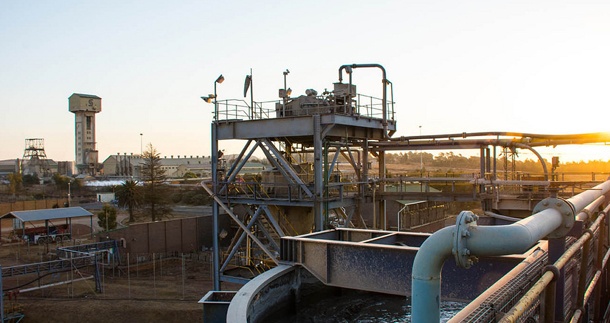
Following on from my interim pre-results note on 19 August, Sibanye has reported a respectable set of numbers with normalised EPS of 234 cents, 767% more than the 27 cents for the first six months of F2015 and 119% more than the 107 cents for the second six months of F2015.
Normalised earnings came in at R2,152 billion which is not out of line with my full year estimate of R3,941 billion.
The analysts results presentation provided little new information other than Sibanye is putting the hand brake on new deals as mining values have soared since the beginning of the year.
Shareholders will be pleased with the 85 cents interim dividend declared which compares with 10 cents for the first six months in F2015.
The result incorporates platinum for the first time with effect from 12 April when the R4,3 billion Aquarius acquisition concluded.
Net debt has therefore increased to R6,2 billion from R2,3 billion or R4,4 billion excluding ring-fenced Burnstone debt of R1,8 billion. Including the proposed Rustenburg acquisition net debt goes from R4,4 billion to R5,9 billion.
Gold output at 23 229 kg or 746 800 oz is up 4,5% with revenue R603 427 per kg or $1 220/oz at an average exchange rate of R15,38/$. Output is a function of tons milled up 3% and yield up 2%.
Output was a little worse than anticipated due to labour and safety stoppages and local community disruptions in North West province.
The gold price averaged $1 220/oz for the six months compared with $1 207/oz so the result was driven by a weaker currency and thus a gold price 30% higher in rand.
Gold cash costs of R381,635/kg translates to $772/oz at R15,38/$ whilst all-in cost is R448 922/kg or $908/oz which compares with $1 190/oz previously at an average exchange rate of R11,90/$.
However, I need to reiterate that costs are in ZAR not USD so a strengthening of the rand inflates dollar costs. At R14/$ cash cost would be $848/oz and all-in cost $998/oz.

Production guidance is maintained at 50,000/kg with total cash cost forecast at approximately R355,000/kg or $760/oz at R14,50/$ with all-in sustaining cost at approximately R425,000/kg or $910/oz (which rises to $945/oz. at R14/$).
I have been working on a gold price of $1210/oz for the year. As the gold price averaged $1 220/oz for the first six months if the gold price stays at around $1 330/oz for the six months to the end of December then the average is $1 275/oz or 5% more than my current average. $1 275/oz seems a reasonable expectation from this vantage point.
However, the wildcard, as always, is the rand. With the recent Gordhan incident, the rand lost 5% of value in a day. I have been working on R15,50/$ but if rand stays at say R14/$ until the end of the year the average is R14,70/$ for the full year or 5% stronger than the R15,50/$ assumption, which negates much of the 5% higher gold price relative to the base case.
All else equal, in the sensitivities the rand exchange rate trumps the gold price
I have had a full year EPS estimate of 430 cents for the year but even allowing for the recent movements in the gold price and currency it is unlikely that the result on these assumptions would be more than 10% higher than that.
Given rising rand costs it is likely that on current gold and rand pricing earnings could be lower in 2017 than 2016. I currently have earnings of R3 238 million or EPS of 353 cents in 2017 on the basis of gold at $1 250/oz and the rand at R14,50/$.
Per my earlier comments, I have cautioned against chasing the stock with up to R60 region a reasonable number net of debt and allowing for the variabilities we are dealing with. The stock has retreated from recent highs of R70. At R58 or below Sibanye starts to look interesting again for new money.
Kind regards
Mark N Ingham